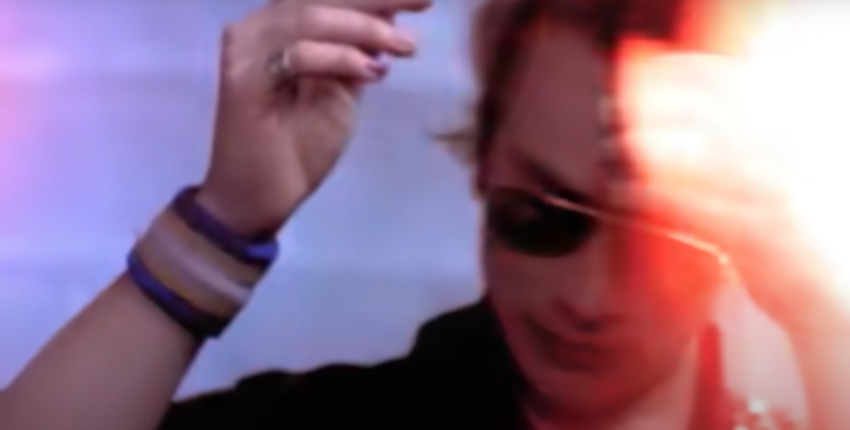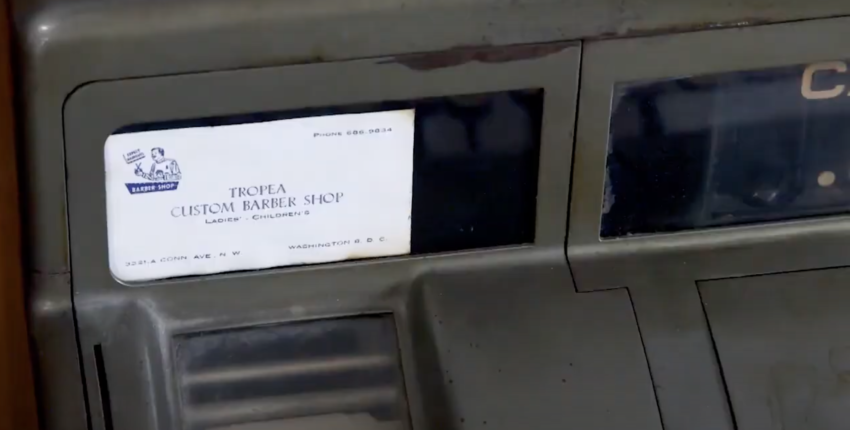The Paradox Of Art And Music

Photo: DaveSimpson.org
Music is an art form. That’s a given. And just as there are obvious differences between the work of Monet and a kindergarten finger-painter, so there are between musicians and people who play a musical instrument. Some people decide they want to play in a band, while others are born to do it. This fact, although fostered in my mind for a long time, was reinforced last year while attending three very different shows in the space of a week (and then another important date a few weeks after).
Music is also subjective; people have different tastes, naturally, and while you wouldn’t see much crossover in audiences for Taylor Swift and Nick Cave, I’d wager that fans of the latter have at least heard the former’s music, and rejected it accordingly for what it is––manufactured, saccharine and made for mass consumption and maximum profit––while fans of the former would offer a blank stare at the mention of the dark lord. It’s the difference between dining at McDonalds and a Michelin 4-star. And so it was that we donned our fine music-dining attire and headed to the cavernous TSB Arena to feast on some Bad Seeds.
It’s hard to find the superlatives to ‘review’ a Nick Cave show, and this is about the art form that he and the Bad Seeds have been consistently refining over the best part of three decades. Musicians who were born to be, and a wordsmith who is genuinely deserving of a Nobel Literature prize for his prolific output of not only complex and compelling lyrics, but also novels, short stories, poetry and film scores and scripts. Cave can actually sing in key and has a tonal range that reaches beyond strangulated caterwauling. The cool emanating from that stage would’ve put out the fires that annually rage in Cave’s homeland; even during the songs when most of the band weren’t required, they gave a lesson in consummate ease, of how to sit behind a drum kit, or stand virtually motionless with a dormant guitar while the undisputed leader connected both physically and spiritually with the captive congregation, only too eager to surrender their souls. A religious power to which even atheists willingly submit. Art on a level that few can touch, with entertainment a fortunate side-effect.
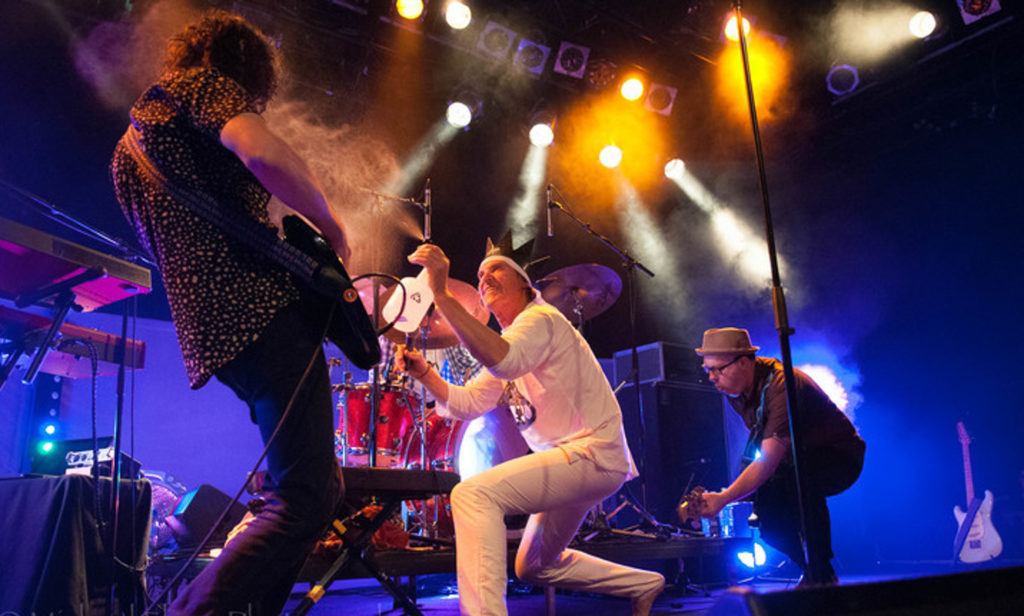
Photo: Michael Flynn Photography
Entertainment is undoubtedly a huge factor in music, especially the live arena. Where Cave effortlessly keeps the audience entranced by his depth of musicianship and mere presence, others strive to make the visual aspect of a show the centrepiece on which it is built. Not to say a band like The Mockers aren’t musically adept, but it’s a whole different ball game. As a non-native, I hadn’t heard of the 80s Kiwi band at all, but when tickets presented themselves and at the behest of my friend, I was keen to check them out. A packed San Fran was testament to their popularity back in the day, which was obviously where most of the crowd emanated from. The art of The Mockers was pure entertainment, regaling us with anecdotes of the past interspersing the back catalogue of hits and favourites, punctuated by some stage antics which left me puzzled but had the crowd lapping it up. I still don’t know the significance of the spray bottle but it got a good workout. Apparently the singer went on to be a media figure of sorts, he told a good story and the housewives seemed to like him! But like a packet of cheap chocolate biscuits, by halfway through I couldn’t stomach any more and I had to call a halt. Simple, sugary, tasty for a while and a hint of flavour, but not really a meal.
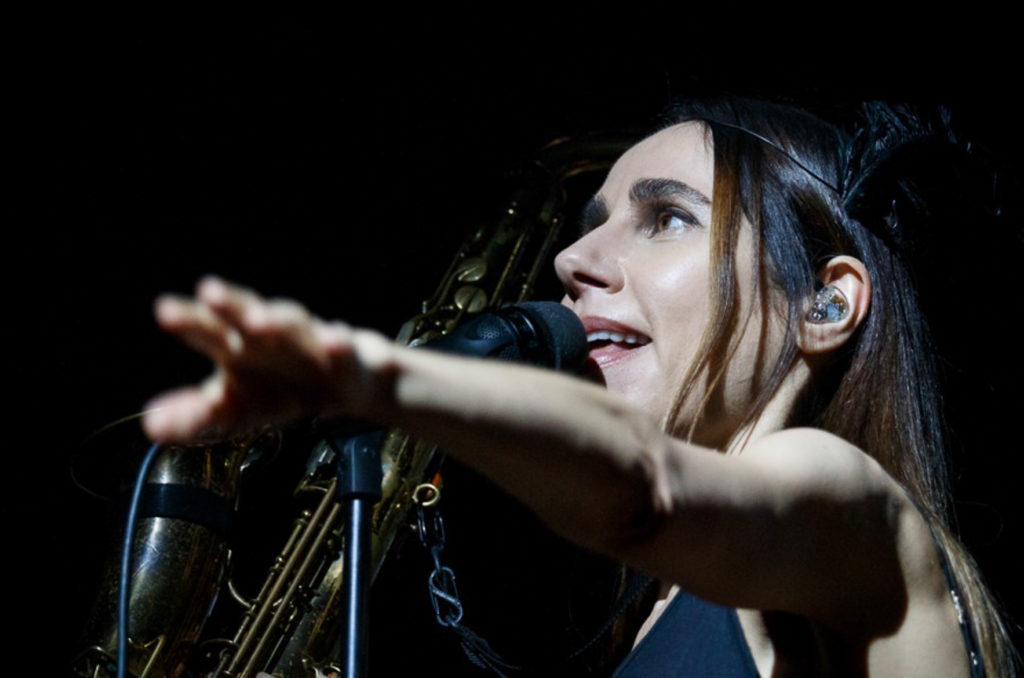
Photo: Dave Simpson.Org
A few days of downtime to replenish the cerebral vortex and clear the earways were welcome, before a show that I had been looking forward to for the best part of a decade since the last experience. I’d seen PJ Harvey live on four occasions in Australia, each time with very different band line-ups, from stripped-back 3-piece to interchangeable five- or six-pieces, each time different but consistently stunning musically. Polly herself would morph between solemn crooner, guitar-weilding rocker or stalking frontwoman, all in the space of one show. This time, on the back of latest release The Hope Six Demolition Project, we were presented with ten of the finest musicians assembled on one stage, including long-time cohorts John Parrish and former Bad Seed Mick Harvey.
While this was a live music show, there was no hiding that it was also a major production. From the moment the band walked out single-file hitting a variety of drums, taking their places for the first track, every movement was choreographed and well-rehearsed. Yet it appeared seamless and not contrived in the least, each musician capable of playing multiple instruments and showing their prowess on all of them on different parts of the stage in various songs. You could hear a pin drop as the audience sat transfixed by the theatre unfolding before them. Hair on arms and back of neck stood on end, tears of joy welled, hearts fluttered. At least in my seat. From start to finish, time stood still, or was obliterated and forgotten for however long it took for the spectacle to play out. The artists had used us a their canvas and left a masterpiece on our souls… only we could determine what colours were used.
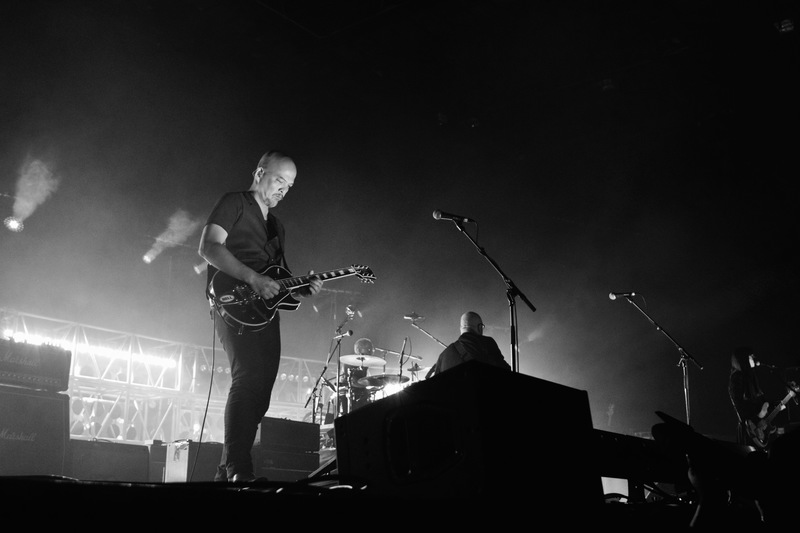
Photo: Carolyn Blackwell
A month passes, and the feeling remains, what we’d witnessed had left an indelible mark, a feeling that not much could top or even compare to the pure brilliance bestowed upon us. But there were more legends coming to town in the form of the Pixies, without question one of the most influential and important bands of the late 80s/early 90s. At that time there was little they could do wrong in my eyes, and their legacy lived on in revered tones in the wider music landscape for many years after their demise. As usually happens when bands reform, there is a mix of excitement and trepidation; will they live up to their legendary status, or be shells of their former selves?
When the Doolittle tour came to NZ in 2010, it was hard not to be a little bit excited, finally getting to see the band 20 years after discovering them. Somehow it was a mix of elation and disappointment that came from that show, more so that there was a lack of many songs from albums that weren’t their iconic release. A few months later they returned, unshackled by the Doolittle tag, and it was a whole different experience. I’m not sure if the band felt the same weight had been lifted, but their performance on that occasion seemed to transcend time. Time has a cruel way of distorting reality, and in the seven years since they had left me enthralled, there had been transformations, developments. Kim Deal was no longer, and new music had been created. Of course when a band had so many instantly recognisable anthems, the “I like your old stuff better than your new stuff” phenomenon will always raise its ugly head, and the new album had a sense of heard it before, but not as good. Still, that was never going to stop anyone with even a passing fondness for the band from helping fill the same cavern that had Let Love In for Mr Cave just a month earlier.
With such a catalogue of brilliance behind them, how could they fail? Not to say they did, but a sense of going through the motions was inevitable when almost 30 years had passed from the headiness of the 90s and the freshness of those very songs can’t not wane. The mix of young and old in the crowd was testament to their status in the musical pantheon, and every song was lapped up en masse, slightly less so for the new material, unsurprisingly. The band’s own legend seemed at once to hold them in reverie, while also stilting any new creativity, possibly imbuing them with a tiredness from trotting out the same setlist night after night, decades after the fact.
That’s the fundamental difference between Pixies, Cave, and Harvey. Taking ten or more years off, coming back on the strength of a back catalogue (a brilliant one no doubt) and virtually being a tribute band to oneself, as opposed to the continual growth, experimentation and development as musicians that continues to sustain the artist and audience alike. Pixies have cemented their deserved place in music history and maybe should rest on their laurels, while Cave and Harvey continue to push themselves and metamorph, to feed their own needs as artists first, entertainers second.
*Since this article was written I’ve come to discover many disturbing things about Cave, Harvey, Pixies, their cohorts and practices. I can no longer listen to their music, and the knowledge of how these people and the wider entertainment industry operates has sickened me to the core. It’s very saddening to realise our heroes are scum.

